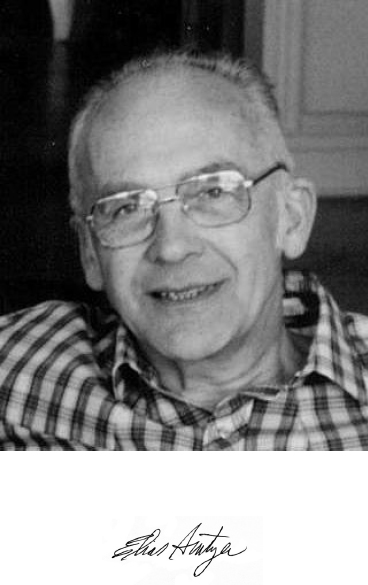1925–2012
Elected in 1979
“Invention of the glass laser and the fiber-optics laser.”
BY ANTHONY J. DEMARIA
ELIAS SNITZER, a modest giant in the field of lasers and fiber optics technology for over 50 years, died on May 21, 2012. He was 87 years old.
Eli, as he was called, was born in Lynn, Massachusetts, on February 27, 1925. He graduated from Tufts University with a BS in electrical engineering in 1945, and an MS and PhD in physics from the University of Chicago in 1950 and 1953. He joined the faculty of Lowell Technology Institute in 1956. In 1958 his career was stalled when he was subpoenaed to appear before the House Un-American Activities Committee of the United States House of Representative because he had been involved in left-wing politics as a student at the University of Chicago. Consequently, he lost his teaching job at Lowell Institute of Technology. His case was taken up by the American Association of University Professors and some years later the case was settled in his favor.
American Optical Company hired him and he began his work on Nd:glass lasers and glass fibers. In 1961 he published the theoretical description of optical modes in glass fibers. Shortly thereafter he reported the first operation of the glass laser. This report came soon after the report of the operation of the world’s first laser, the ruby laser at Hughes Research Center in 1960. Eli followed the ruby laser announcement with
the first reported operation of a glass laser and later with the first report of a fiber laser and amplifiers. These inventions have played an important role in the development of lasers and fiber optics technologies in optical communications and in scientific research.
Eli remained at American Optical as director of corporate research until 1977 when he joined United Technologies Research Center (UTRC) as manager of photonics technology. At UTRC he was responsible for lasers, integrated optics, fiber optics, fiber sensors, and laser radar, to name a few, and instrumental in the initiation of the UV side-writing of the fiber Bragg gratings program.
In 1984 he joined Polaroid where he directed programs in fiber and integrated optics for communication, sensors, and photographic instrumentations. He invented the double-clad fiber laser, which has found extensive applications in fiber communication.
In 1989 he joined the Ceramic Sciences Engineering faculty at Rutgers University where he continued to teach and to conduct research in fiber laser amplifier and glass Bragg gratings until his retirement. He also led the development of the praseodymium fluoride glass fiber amplifiers and the development of mask fabrication for Bragg grating.
He was elected fellow of the Optical Society (OSA) in 1964 and awarded its Charles Hard Townes Award (1991) and John Tyndall Award (1994), the IEEE Photonics Society Quantum Electronics Award (1979), the Otto Schott Research Award (1999), and the Rank Prize for the invention of the cladding-pumped fiber laser (2000). He was named a life fellow of the IEEE and elected to the NAE in 1979. The American Ceramic Society honored him with the Morey Award for glass science in 1971 and as the inaugural recipient of the Stookey Award given for a lifetime of innovative contributions in research on new materials and processes involving glass. In 2012, IEEE recognized his work with a milestone plaque placed outside the American Optical Research Center in Southbridge, MA.
In addition to his distinguished professional career, Eli Snitzer was a devoted father and family man. He was the





